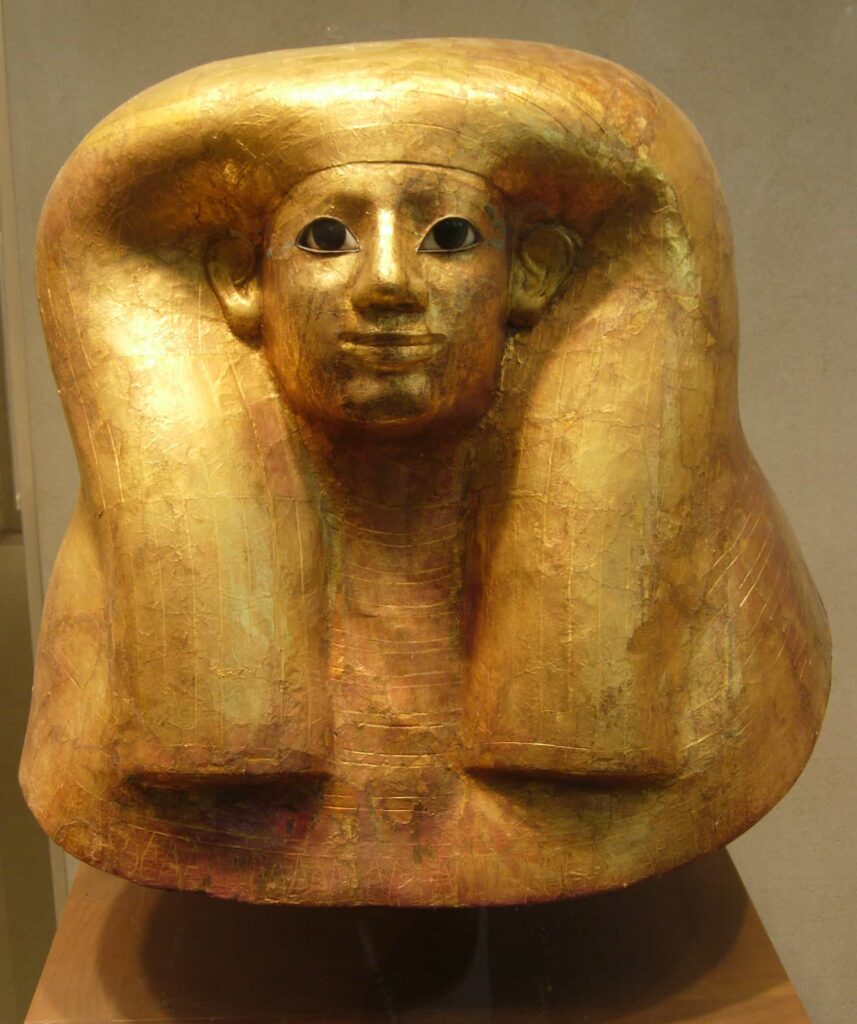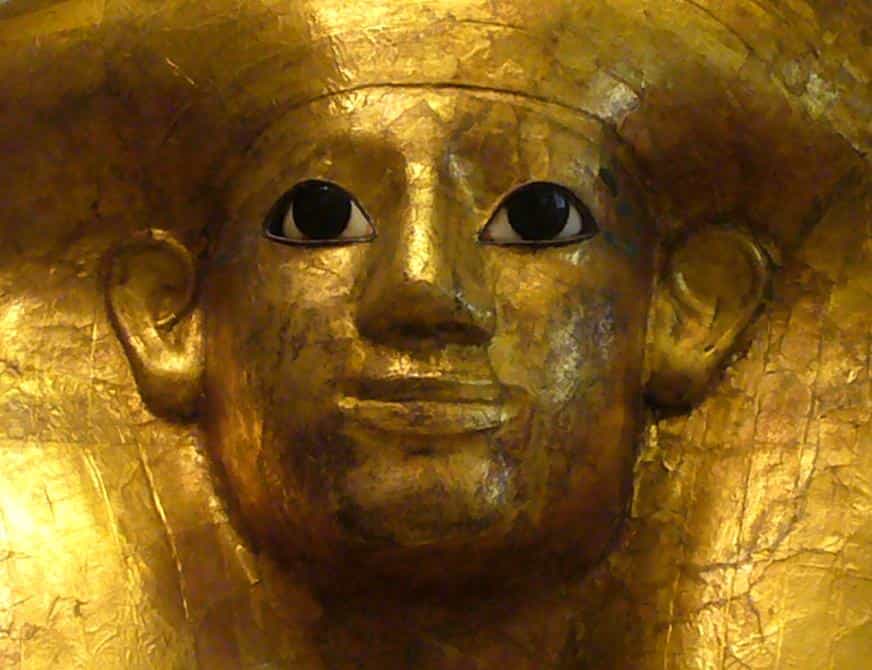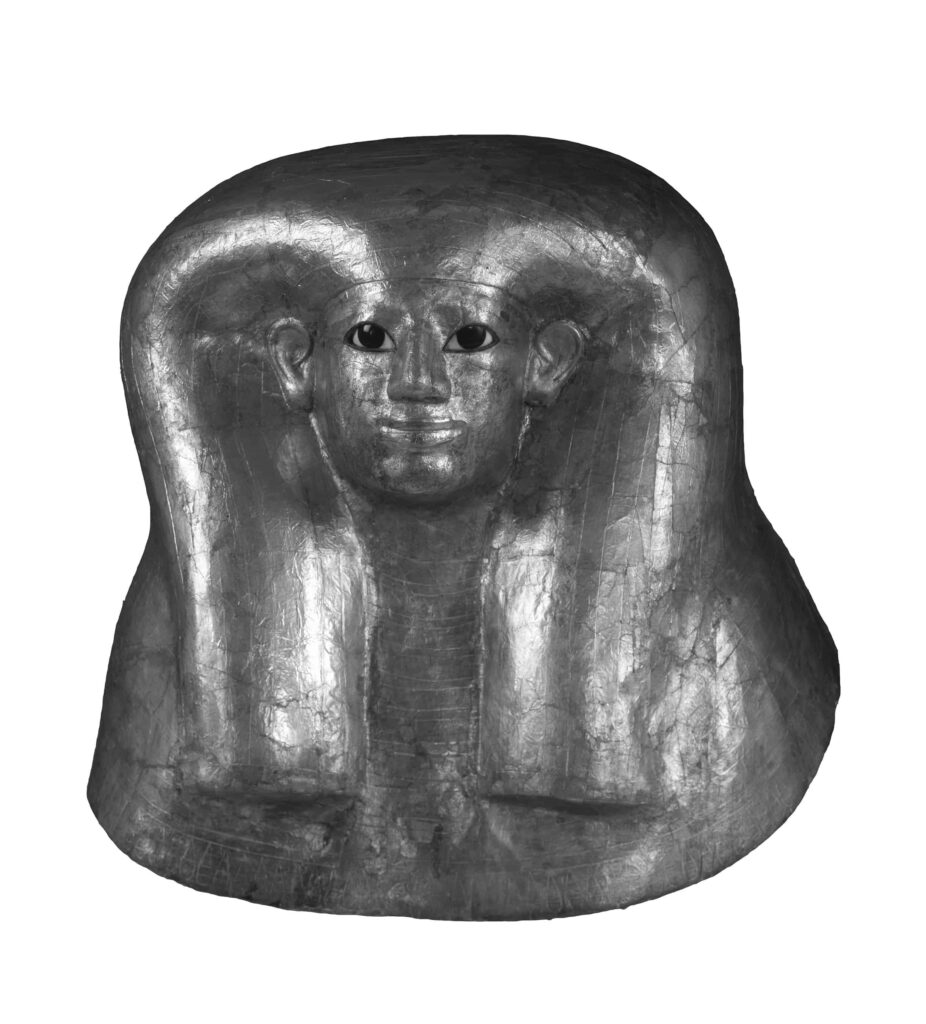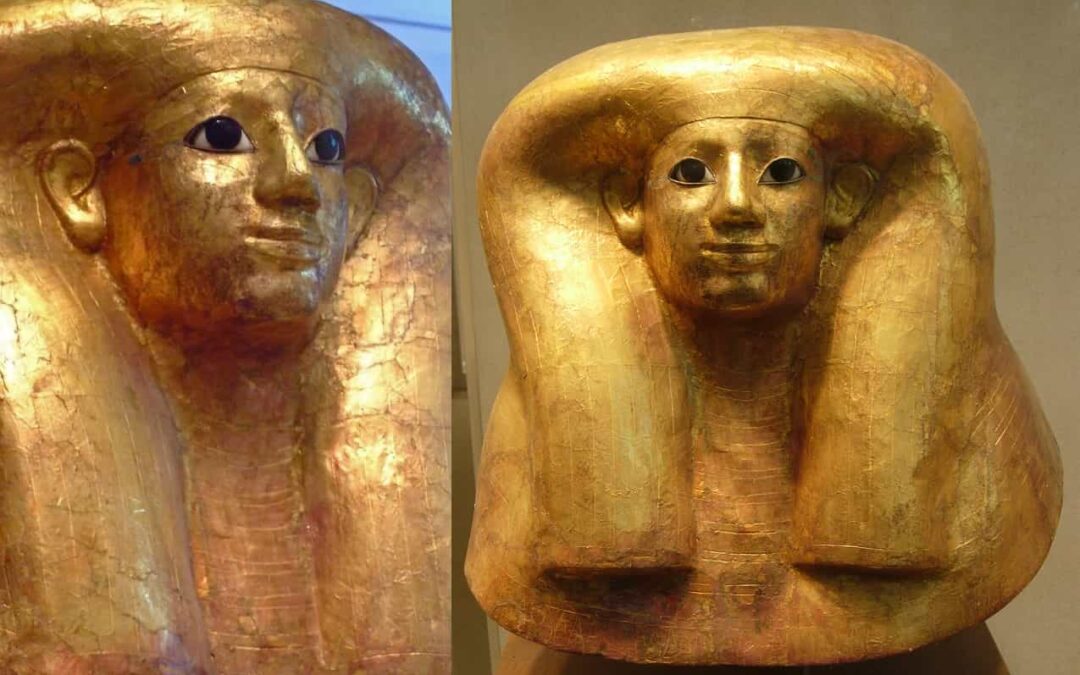The Hatnefer Funerary Mask is a mask dating approximately from the years 1492 BC to 1473 BC, belonging to ancient Egyptian art.
It was discovered during archaeological excavations carried out between 1935 and 1936 inside the Tomb of Hatnefer and Ramose. The tomb is located in the necropolis of Sheikh Abd el-Qurna, near the city of Thebes, Egypt.
After its discovery, the Hatnefer Funeral Mask was acquired in the same year, 1936, by the Metropolitan Museum of Art in the United States, where it became part of its art collection.
Description
The mask has a height of 45.8 cm and a width of 44 cm. It is made of cardboard, gold, travertine (Egyptian alabaster), obsidian, and ebony.
It is a funerary mask that was first molded with cardboard (a material similar to papier-mâché but made with layers of linen and plaster), and then covered with gold foil.
The mask’s face features inlaid eyes made of travertine and obsidian set in the ebony eye sockets. It also has a straight nose, full lips curved in a slight smile, and a rounded and pronounced chin. She wears a tripartite wig on her head with the hair divided into three parts, two locks on the sides that fall on her chest and frame her face, and another thicker lock that falls down her back.
It should be noted that the mask was originally located on the mummy of Hatnefer, the wife of the civil servant Ramose and mother of the civil servant and architect Senenmut. Along with the mask, several pieces of personal jewelry were found in the mummy, including two beetles and two rings, between which is the Ring of Hatnefer.
The Hatnefer Funerary Mask is currently housed in the Metropolitan Museum of Art in New York, United States.










